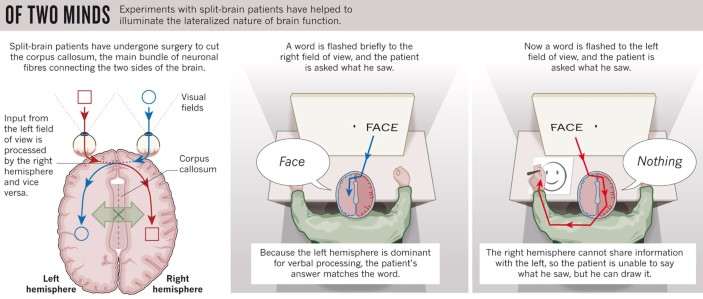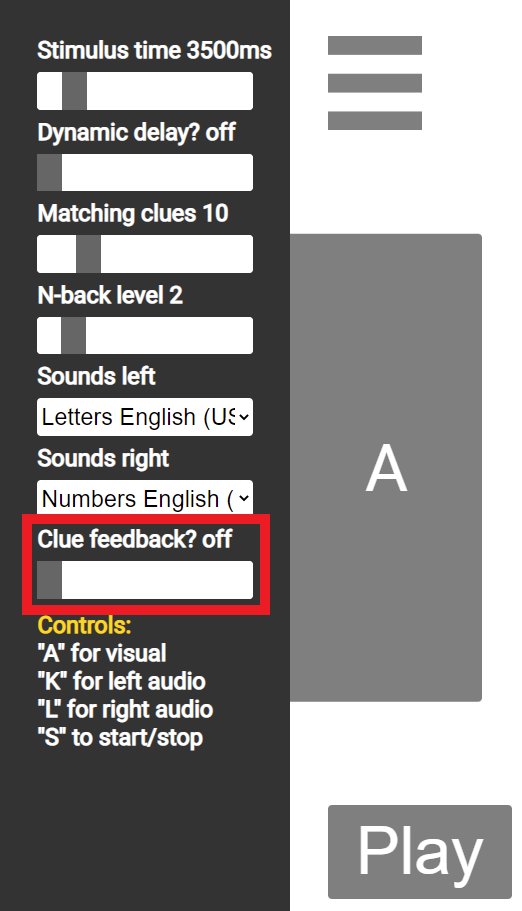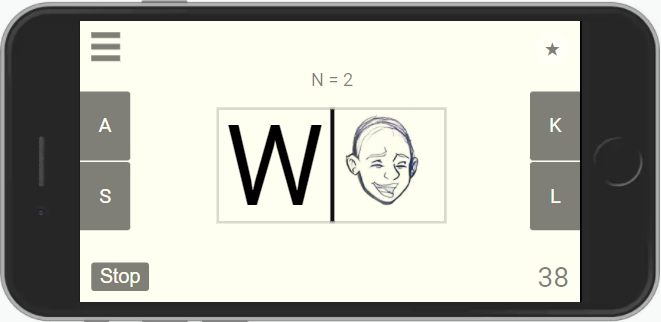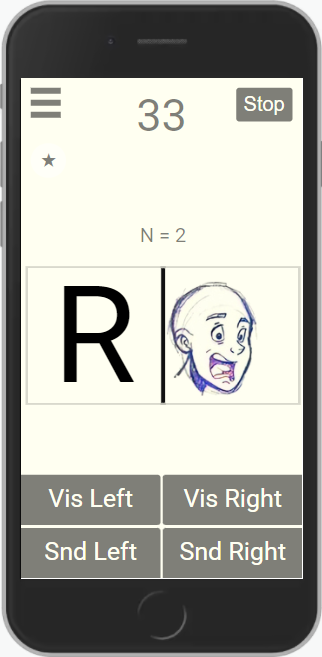A couple more experiments
Fredo Corleone
Fredo Corleone
Fredo Corleone
Fredo Corleone
itrn...@gmail.com
Fredo Corleone
Fredo Corleone
I can implement dichotic stimuli for vision too, thanks to the fact that when you focus on a point, images to the left of that point are sent to the right hemisphere, and viceversa.

itrn...@gmail.com
Fredo Corleone
itrn...@gmail.com
Fredo Corleone

Fredo Corleone


Nicholas Wild
Fredo Corleone
BM XT
It involves some sound with delay listening among other things.
BM XT
BM XT
BM XT
infogr...@free.fr
–> Doctor Guy Bérard – general practitioner, vocational researcher and open-minded ENT – has synthesized a wide variety of scientific data and demonstrated the close relationship between hearing and behavior. See his book Hearing Equals Behavior.
–> This innovative method restores balance and creates good organization in the auditory system as well as in the sensory systems.
–> Our sensory perception influences our behavior. This is proven to be directly related to the way we hear.
–> The hearing mechanism can be trained and harmonized.
–> This has the consequence of improving the skills and development capacities of the subject, in particular in the following areas:
- Behaviour
– Sensoriality
- Learning
- Memory
– Attention and Concentration
- Speech
– Hearing
– Balance and coordination
- Welfare
- Music
–> Bérard AIT is a safe and non-invasive method, which consists of listening to music specially modified by a Bérard-approved device. The program consists of 20 sessions of 30 minutes and lasts 10 days.
–> The effectiveness of Bérard AIT has been proven since its origin by numerous scientific researches, in particular for populations presenting:
– Autism Spectrum Disorders
– PDD (Pervasive Developmental Disorders)
– Learning disorders (dyslexia, dysphasia, …)
–> Bérard AIT is also often used for populations with:
– Intellectual precocity and High Potentials
– ADHD (Attention Deficit Disorder with or without Hyperactivity)
– APD (Auditory Processing Disorders)
– Sound and music professions
– Foreign languages (comprehension, oral expression and accent reduction)
–> Thousands of people have benefited from the Bérard AIT method around the world, in more than 42 countries, in private intervention centers for tutoring and educational therapies, and some schools have integrated it into their services Support."
infogr...@free.fr
infogr...@free.fr
"De l'écoute au Succès
par Dr Bernard M. AURIOL, MD
With a "normal" audiometric examination, we can sometimes notice unskilfulnesses to use hearing: hypacusis or inattention restricted to specific frequencies, inaccuracy of time discrimination (between successive clicks), unability to analyse variations of pitch, unhomogeneous or left audio verbal control . It all induce the children to school failing.Tracking down testing did have assess such damages. Some listening in training, as Pujol thought, could improve these skills and school results.
1) Some ("autistic") children can make themselves impervious to sound information by dramatically attenuating their cortical responses which will remain present but not very broad or exaggerated. In the second case, the sounds continue to provide stress without allowing adaptation to the environment. This simple remark makes it necessary to pose the problem of the effectiveness of the "listening system" rather than being limited to screening for deafness or hypoacusis.
2) Second question: do certain frequencies have a privileged role with regard to academic competence? Each language relies on specific phonetic distinctions. The phonemes themselves are the object of a more or less intensive use, according to remarkably stable proportions, and are grasped thanks to their particular spectral composition. Each language, as a whole, therefore requires, in order to be understood and spoken, good auditory perception in this or that region of the audiogram.
It is therefore possible that a more or less good performance in the sensitive frequencies plays a facilitating or inhibiting role on linguistic learning and even on all school learning, insofar as they are all transmitted through the word.
This should be true in all cases, but even more so, and pushed to the extreme, when it comes to subjects in a situation of cultural and linguistic transplantation, such as recent immigrants.
This is what pushed us (Jean Pierre Chollat, Xavier Buscail, Robert Divoux, Monique Widmer, Suzette Privat and myself), under the effect of the regular exchanges of the Sound Reflection Group (Pr Josserand), to conduct a study with the Toulouse CREPT to verify this hypothesis (Barel B., 1981).
The study involved 37 adult trainees, all of whom had an independent audiogram and evaluation of their academic progress during the year 1980. They were from Asia, Africa and Southern Europe. We focused on the 1 and 2 KHz frequencies, representing the most "speaking" area in French. Among them, 25 had a very efficient listening test at 1 and 2 KHz, 12 on the contrary presented a weakness of hearing and/or attention concerning these frequencies. All the trainees were divided into quartiles (9 individuals per quartile) corresponding to the following grades:
1: least progress
2: little progress
3: enough progress
4: most progress
Progrès 1 2 3 4
1 and 2 KHz faulty: 5 3 4 0
1 and 2 KHz correct: 4 6 5 9
Those who have good school performance all have correct listening at the frequencies considered, we find on the contrary 5 presenting a defective result at both levels against 3 expected. These numbers become very telling if we compare them with the Listening/Motivation table: the degree of motivation does not seem to be correlated with more or less good listening at frequencies 1 and 2 KHz...
Motivation: 1 2 3 4
1 et 2 KHz faulty: 2 3 4 3
1 et 2 KHz correct 7 6 5 6
These data already suggest that school audiometric screening should attach particular importance to the conversational frequencies of French on the one hand, to the conversational frequencies of the language(s) that the student would like to acquire on the other. In some cases, this would make it possible to orient education more towards Spanish than German, rather towards English than Italian, etc... on a case-by-case basis.
3) On the other hand, temporal discrimination, measured on an individual's ability to separate more or less close clicks (Delta T ), seems to be a faithful indicator of an ability to "understand" the sounds perceived. This manifests itself in particular in the event of “borderline” hearing. Individuals with a good “Delta t” manage much better than others to optimize what they hear in terms of meaning. (Leipp test, improved by Urgell and Bassou). This test, when it is of poor quality, results in the student, if not by difficulty in understanding, at least by slowness, which is detrimental, especially as the subject taught requires more mental agility (Auriol B., 1986 ) .
This problem can be linked to the inability to reproduce sound rhythms (Stambak's test). These disorders are usually accompanied by poor concentration, fatigue and poor understanding. The discrimination of sounds is often insufficient as regards deaf/sound oppositions, children have difficulties with diphthongs and make long/short confusions (Spirig, 1978).
4) The faculty of frequency discrimination, allowing the subject to say whether two sounds of different pitches are distinct and which is higher or lower than the other, seems to be a good predictor of academic competence. M.E. Roblin and P. Vrignaud (1987), were able to exhibit a statistic putting it on the same level as the IQ to predict whether or not a student will repeat the class he attends...
Although physiology has not yet been able to make a religion of the mechanism of frequency recognition, attempts are made to assess the overall performance of our auditory system in this respect (L. Demany and H. Lavenant, 1985).
We can ask ourselves to what extent a given subject will show himself capable, when he hears a sound, of distinguishing it from another of similar amplitude and of accurately characterizing the direction of the perceived variation: is it higher or worse ?
The two sounds should be heard one after the other, which improves sensitivity. The duration of the intermediate silence does not play a disturbing role here as in the analysis of intensities (L.J. Postman, 1946).
Proper functioning of the listening system implies the possibility of situating one frequency in relation to another: music lovers aspire to the "comma", the interval which separates, for example, the C sharp from the D flat (the tempered scale of the piano neglects this "nuance" which is 1/9th of a tone). Everyone should, at least, suitably situate the variation of a fourth that goes from DO to FA or FA sharp, for example ....
Well, even in the professional orchestra, we can meet certain performers who fail to do so if the sounds presented are pure, deprived of the harmonics which usually make them musical notes, notes of SUCH musical instrument , with its timbre, its easily recognizable physiognomy of a sound object, specifically produced by the piano, the guitar or the double bass! (B. Auriol, CNA2, Lyons 1988).
The ability to “categorize” phonetic sounds has been shown to play a huge role in learning languages, reading and writing words correctly. It is obvious that the discrimination of frequencies (and to a lesser degree of intensities) here plays the role of a favorable condition.
Poor height discrimination leading to all sorts of errors (Bradley, 1983). Tomatis (1974) gave the name of "closure of selectivity", "closure of the auditory diaphragm" to this phenomenon which can appear at all points of the audiogram or only on one of its portions. Harrison (1982) pointed out the inappropriateness of the term 'selectivity' to designate what might be better called, 'Tonal Analytical Skill'.
Here is the evaluation method he uses: one makes one of the subject's two ears hear a pure sound, the highest pitch available, with an amplitude reasonably above the average threshold, then another located 1/2 octave at the below and it must indicate if the two sounds were of the same pitch or if their interval was of the ascending or descending type... We start again from fifth to fifth, from 8000 to 125 Hz. We will operate in the same way, then, with the other ear.
For some intervals no difference in height is indicated, or even, this difference is evaluated in the opposite direction to its reality!…. G. Bérard (1982) indicates that the results are about the same whether the frequencies to be compared are presented, in their decreasing or increasing order... He confirms, like all users of this test, that the results vary little over time, unless psychological shock (closing) or sonic therapy (opening).
Roblin and Vrignaud (1987), studying 6th and 5th grade students, established statistically (Correspondence analysis, discriminant analysis, etc.) that the right and left C.A.T. were linked, that the errors were grouped together according to three frequency regions (bass, medium, treble) and that these errors showed a hierarchy such that the treble is more easily disturbed than the bass and the left listening than the right.
They were able to identify a predictive value on school results (70% of accurate predictions concerning whether or not to go to the next class) equal to the predictive value of psychotechnical tests (reading and spelling, comprehension, aptitude for verbal reasoning, aptitude for learning of all kinds). It is the measurements concerning the C.A.T. for the LEFT ear which seem, paradoxically, the most reliable. The paradox is only apparent if we consider the very great importance of melody as an attentional support of language.
A psychological interpretation of the closure of C.A.T. has been given: it would reflect a strong repression (conscious or not) of affective communication, all emotions combined. For example, a smoldering aggressiveness that cannot be expressed directly. Or, an unfulfilled and unexpressed need for tenderness, etc...
Social expressiveness seems linked to the "openness" of the C.A.T. to such an extent that, when the subject begins to perceive the differences of which he was unaware, to situate them well, one observes, in an almost constant way, a change in the behavior noticed by the entourage "he becomes aggressive", "she starts seeing lots of people", etc. ... whereas the subject himself can remain unaware of the phenomenon or deny it.
The statistical study that we conducted with M. Bertin (Auriol, 1979) also suggests a link between visuo-motor coordination and openness of the C.A.T. (in particular for the items "aim at a target with a ball" and "speed to draw sticks”).
LATERAL VARIATIONS
If many subjects prove incapable of clearly distinguishing a low sound from a higher sound, it is also the case for declaring a certain sound addressed to one of their ears higher than the same sound sent to the other.
The "diplacusis" (generally associated with the phenomenon of "recruitment") consists in the fact that the listener, listening with both ears simultaneously, a pure frequency, hears it higher in one ear than in the other. He simultaneously perceives two pitches for the same sound. This evokes, of course, the fact of seeing double in what has been designated as “diplopia”.
The "lateral variation" is a much more frequent and non-pathological phenomenon from an ENT point of view. The stimulus is then presented to each ear, SUCCESSIVELY; the listener must indicate if the two sounds have the same pitch or if one is higher than the other..
E. Leipp (1971 and 1977) noticed the great incidence of this phenomenon in the completely healthy subject from a classic ENT point of view, and even in the competent musician. The error seems to be accentuated rather than diminished when increasing the amplitude, for example from 30 dB (“piano”) to 60 dB (“mezzo forte”). The musician can often announce a difference
half or even a tone! The coarsest deviations are located at the ends of the spectrum, whereas in the "medium" frequencies, they are generally weak (which is consistent with everything that is known about auditory competence along the scale). sounds) .
R. Jones and R. Pracy adopted a different protocol, (which tends to minimize and quantify errors). They propose to the subject to vary the sound of one ear to equalize it at a test frequency proposed to the other ear. Under these conditions, the hearing impaired behave in an equivalent manner for the frequencies used, they do not appear to be different from each other, the test-retest fidelity is excellent; music students perform better (0.01 to 2.12% error) than general subjects (0.58 to 4.07% error). It was not possible to demonstrate any variation in these performances depending on the time of day when the test was performed. If we compare the musicians before and after a session of three hours of orchestral performance, we find clear differences: the test before playing is normal, deteriorated (errors of the order of 20%….) then for certain frequencies. .
The difference in method explains the dissimilar results of Leipp and these authors; here it is like the automatic audiogram compared to the classic audiogram. Accuracy is improved by the continuous nature of the stimulation and PROGRESSIVE modification imposed on it.
We can classify the subjects, for each frequency tested, according to their more or less good performance; the distinction between musician and non-musician shows a notable improvement by training and a deterioration by noise.
5) Listening is lateralized and work in Toulouse (Montaud et al., 1978) (concerning 342 subjects, aged 7 to 14, of both sexes) showed that pupils who listen to language with the left ear or present a non-homogeneous laterality, have a statistical handicap relative to those who target it from the right. Auditory left-handed people are more often "delayed" by a year and their number is very significantly increased in remedial or therapy establishments.
Spirig (1978, p.3) remarks on the low concentration of these children, the existence of non-systematic faults and the impression of educators that they “could do much better”.
In the case of a floating laterality, badly established, variable according to the moment, it is about children characterized by “up and down” whose school results are very irregular. “When you get angry, he gets there! ". But you can't be angry all the time...
6) The prevention of deafness, through the precautions that we are beginning to know (avoid excessive noise, certain medications, treat ear infections, etc.) is a necessary basis for academic success. It is not sufficient: it would be good to screen for listening disorders according to the different paths that we have outlined; especially since, most often, they can be rehabilitated (whether by non-specialized collective means: musical awakening; or by more sophisticated techniques of individual rehabilitation as the results of our personal practice suggest).
7) Indications and Contraindications of sonic cures
I designate by this term "sonic cure" (or "acoustic therapy" according to the neologism created by D. Feldman, 1985) all the therapy procedures using the interaction between the patient and a sound environment arranged in order to obtain a positive change in his body.
I will consider here a subset limited to the processes using, in addition to a defined sound source (often musical or vocal), some process of systematic modification of this source: filters, amplifiers, equalizers, etc. ...
Some of these methods have a precise specific objective which dispense with extensive comments; this is the case with Feijoo sounds used in dental or obstetrical analgesia, cassettes designed to facilitate rest and relaxation, etc . . . . the Guberina Suvag Lingua for the rehabilitation of the deaf and the learning of foreign languages, the Lafon device to improve the comfort and linguistic competence of the deaf, etc…..
Conversely, music therapy in its current meaning, without the use of sophisticated signal processing, can enter into the treatment strategy, almost in all cases, at the cost of the practitioner's imagination, culture and know-how. .
Between these two extremes, we find the therapies "armed" with a device that modifies listening: Electronic Ear and its emulators, Semiophone by Isi Beller, Filter by Bérard, Variophone by Auriol and Marinoff, etc…..
David Feldman (1985, p. 135) gives an extremely extensive enumeration of indications for “acoustic therapy”; he proposes to use it in all sorts of listening and phonation disorders as well as in problems linked to an insufficiency of cortical integration.
The preferred indications are for him grouped under four headings:
1 - psychophonological audio disorders. They are linked to a disturbance or a weakening of the desire to communicate and to know: the sonic cure would have the effect of restoring, reinforcing, stabilizing this desire. This category includes childhood neuroses with school decompensation, neurotic and psychotic communication disorders, psychogenic hearing loss, psychogenic dysphonia and language delays.
2 - lateralization disorders.
3 - disorders of auditory attention and attention in general: l Pupils, students, teachers, etc. see their capacity for intellectual effort increased: they are energized, better concentrated... We observe more insurance, more ease in public: relations with others are more active. Often appears a taste, even a passion for reading.
4 - functional disorders of phonation, reading, writing and spelling: stuttering, dyslexia, etc. We sometimes ask the indication to prolong or to prepare a classic speech therapy which becomes, in some cases, superfluous.
Psychometric study of indications
It is to E. Deneys (1986) that we owe the most systematic work to date. His memory makes it possible to predict on which dimensions of the personality the filtered sounds can act and to what extent the target symptoms and/or the structures which underlie them can improve.
She tried to assess with us whether there were personality parameters that were significantly modified, in a determined way, by the prolonged use of sound therapy with the Variophone (or the Tomatis ear), using the systematic modification of various sound sources, according to a progressive and systematic protocol.
We tested (Test M.M.P.I.) a certain number of adult subjects before this sound therapy and after more than six months of practice.
We observe a decrease in the scales of anxiety, depression (cf. also B. Auriol, 1978), internalization, introversion and neurosis and an increase in the scale of "ego strength" ("Ego Strength"). ”) and the acting out scale.
It should be noted that increasing the scale of acting out has drawbacks, possibly serious ones, which call for great vigilance regarding the client's propensity to realize his anxieties in reality rather than to bear the burden of them. internal. There is a significant risk of auto or hetero aggressive acts, of poorly integrated sentimental, professional or ideological changes.
Two scales (A and R), useful for research, have been proposed by G. Welsh: they constitute a very satisfactory evaluation of the essential factors which have been isolated in a stable manner in the vast majority of the factorial studies of this test.
Scale A concerns rather the "subjective" and "intersubjective" world of values, judgments, inner life, feelings, etc... The elevation of this scale corresponds to an increase in "existential angst" , of the "tragic feeling of existence", of introversion, of the tension on sentimental, subjective inner values to the detriment of action, of attention to the environment, of direct and frank communication with others ... (Eysenck's Introvert; C.G. Jung's Feeling-introvert/Thinking-extravert axis).
The R scale concerns the attitude towards the internal (somatisations) or external (contacts, science and technology, etc.) “objective” world. Raising this scale corresponds to an increase in positivism, extroversion, realistic and objective values of life, including in the form of somatization or acting out in the event of a conflict... (Extrovert d 'Eysenck; Sensation-extraverted/Intuition-introverted axis of C.G. Jung).
The sonic cures favoring the listening of high frequencies and the quality of their analysis as well as a lateralization of the verbal control on the right have the effect of decreasing this scale A.
This is in line with clinical observations, which have led all practitioners to affirm the “relational dynamism” produced by the sonic cure. It is an openness to communication and to the outside world: awakening, concentration, attention, activity, human relations. In a few cases, rare but very suggestive, one is surprised to hear witnesses from the family or school environment boasting of an improvement in behavior that is not necessarily confirmed by the subject who considers that he has not fundamentally changed. Sometimes he even has the idea that it is the circumstances that have become more favourable.
Conclusion
We are led to two suggestions: the screening, and at least the in-depth examination in case of school failure, should be interested in name only in listening to the frequencies, especially those which are involved in the language, but also in the capacities analysis (pitch, discrimination of close clicks) and the good quality of lateralization ...
The education of the ear (music, living languages) should start early and be the subject of thorough pedagogical research. In the event of insufficiency leading to the onset of school failure, proper auditory rehabilitation should be proposed. A particularly interesting re-educational approach is based on the use of hearing-modifying devices.
C.A.T. = capacité d'analyse tonale = tonal analysis ability.
http://auriol.free.fr/psychosonique/ClefDesSons/difference.htm :
"The ability to "categorize" phonetic sounds has been shown to play a huge role in learning languages, reading and writing words correctly. It is obvious that the discrimination of frequencies (and to a lesser degree of intensities) is here a favorable condition. Poor pitch discrimination leads to all kinds of errors (Bradley, 1983)."
"Roblin (1987), based on a study of 6th and 5th graders, established statistically (correspondence analysis, discriminant analysis, etc.) that right and left tonal analysis ability were linked, that errors were grouped according to three frequency regions (lows, mids, highs), that the highs were more easily reached than the lows and the left listening more than the right. It was able to identify a predictive value on school results (70% of accurate predictions concerning the passage or not in the next class) equal to the predictive value of psychotechnical tests (reading and spelling, comprehension, aptitude for verbal reasoning, aptitude for learning of all kinds). The measurements concerning the tonal analysis capacity for the left ear seem to be the most reliable."
